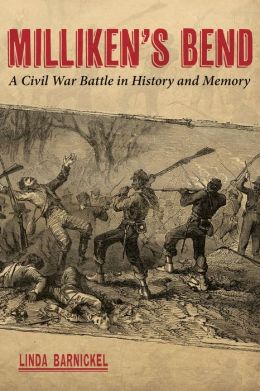Collectors of historical artifacts often like to share what they have learned about the previous owners of their treasures. That motive drove Alan I. West, who purchased a medicine chest once owned by Confederate medical officer Christopher H. Tebault. When he learned of Tebault’s support of the Lost Cause ideology, West reasoned that knowledge of Tebault’s life and the historical context surrounding his activities might improve readers’ understanding not only of the Civil War, but also of today’s discussions of race relations and Confederate monuments.
West’s efforts resulted in the book Christopher H. Tebault, Surgeon to the Confederacy. The title and cover suggest an emphasis on Tebault’s Civil War service. Instead, only one of six chapters covers that topic; most of the rest deal with the postwar era. The context supplied by West, in volume and detail, overbalances what is actually known about Tebault. Thus, the book seems more a compilation of historical explanations, linked by relatively sparse mentions of Tebault, than a cohesive biography bolstered by background information.
Tebault evidently left no Civil War journal or diary, and no informative cache of personal wartime letters has surfaced. His service records are scant, and if his peers described him during the war, their remarks have been lost to time. More is known about Tebault’s postwar life because of his writings, but he was inclined to express his opinions by quoting men with whom he agreed. For example, in an 1889 paper on yellow fever in New Orleans, Tebault’s own words served primarily to introduce long passages written by other authors. Quotations also appear frequently in West’s book. Many are long—some exceed a thousand words—and defy easy understanding.
The book’s documentation is problematic. Numerous statements about what Tebault was doing at particular times, for example, appear with no indication of their source. In one instance, West states, without support, that Tebault was promoted from assistant surgeon to surgeon. Knowing the basis of that claim would help historians who might otherwise believe Tebault’s compiled service record, which shows him being paroled in May 1865 as an assistant surgeon. Some sections of the long excerpts that West attributes to Tebault were actually written by men quoted by Tebault.
Contradictions are also bothersome. On one page, West says that Tebault received his medical diploma in April 1862, while on another, he describes a February 1862 event as occurring after Tebault’s graduation. West indicates that Tebault and his brothers were not members of the Crescent City White League, which clashed with the New Orleans Metropolitan Police in September 1874, yet he presents a letter in which Tebault himself named two of his brothers as members. Early in the book, West says that Southerners viewed the bombardment of Fort Sumter as an unavoidable consequence of the Federal government’s unlawful seizure of South Carolina’s property, but he later states that the South considered the bombardment as an unlawful Federal seizure of state property.
There are factual errors besides those highlighted by the contradictions. West states that Tebault served during the war “as a surgeon on the staff of every southern commander in chief,” but what he means is that Tebault served as surgeon general of the postwar United Confederate Veterans during the terms of various UCV commanders in chief. West states that Samuel Preston Moore grew the Confederate army and navy medical departments to more than 3,300 men, but Moore was the army’s surgeon general and had no responsibility for the navy. West states that some 7,000 men of the Twenty-First Louisiana Infantry helped to build artillery batteries on Island Number 10, but it would take multiple regiments to supply that many soldiers.
Among thousands of Confederate medical officers—some of unquestioned brilliance and many with vastly more experience than Tebault—West describes Tebault as “one of the top physicians serving the Confederacy.” That assessment is offered with little logical support and is but one example of West viewing Tebault with an admiring rather than an objective eye.
Tebault led a life worth examining, and because he is unfamiliar to most readers, much of what West says about him will seem like fresh information. West’s history lessons may also give readers insight into the mindset of some Southerners regarding the war, Reconstruction, race, and the Lost Cause. However, West’s book is not an easy read, and concerns about documentation, accuracy, and bias may cause readers to wonder how much of the book they can safely believe.
Guy R. Hasegawa is an independent scholar specializing in Civil War medicine. His most recent book, Matchless Organization: The Confederate Army Medical Department, will be published in mid-2021 by Southern Illinois University Press.





